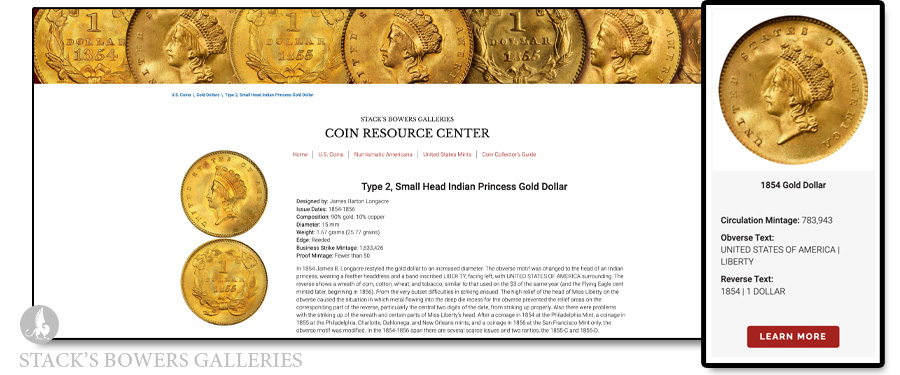
Type II gold dollars are the rarest subtype of that denomination. Between 1854 and 1856 it had a cumulative mintage of just two million pieces, far fewer than its predecessor or successor types. Stack’s Bowers Galleries’ Coin Resource Center has entries covering many gold dollars and for this blog we’ll look at the inaugural issue of the Type II, the 1854.
After the Type I gold dollar had been produced since 1849, the diameter of the coins was increased, as the initial size proved impractical for circulation. James Barton Longacre, the U.S. Mint engraver responsible for the original design, redesigned the coin. He kept and updated many of the original design elements, shrinking Liberty’s bust and adding a Native America-inspired bonnet – giving the subtype its “Small Head Indian Princess” name. An agricultural wreath replaced the laurel wreath encircling the denomination on the reverse. The first year of this new design, 1854, saw a mintage of 783,943, making it by far the most common date of the subtype.
This larger diameter subtype was short lived, produced only in 1854, 1855, and 1856. In 1856, the bust was enlarged, and the Type III gold dollar was created. That type would remain in production until 1889.
Entries for gold dollars in the Coin Resource centers are structured by denomination, subtype, strike (Circulation or Proof), and date. Each of these tiers has a narrative outlining historical facts and collectability. A link to recent auction listings and a Coin in motion animation are included.





